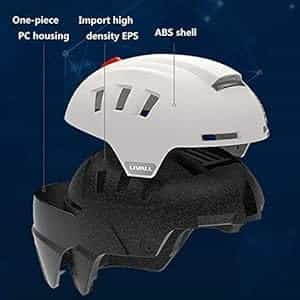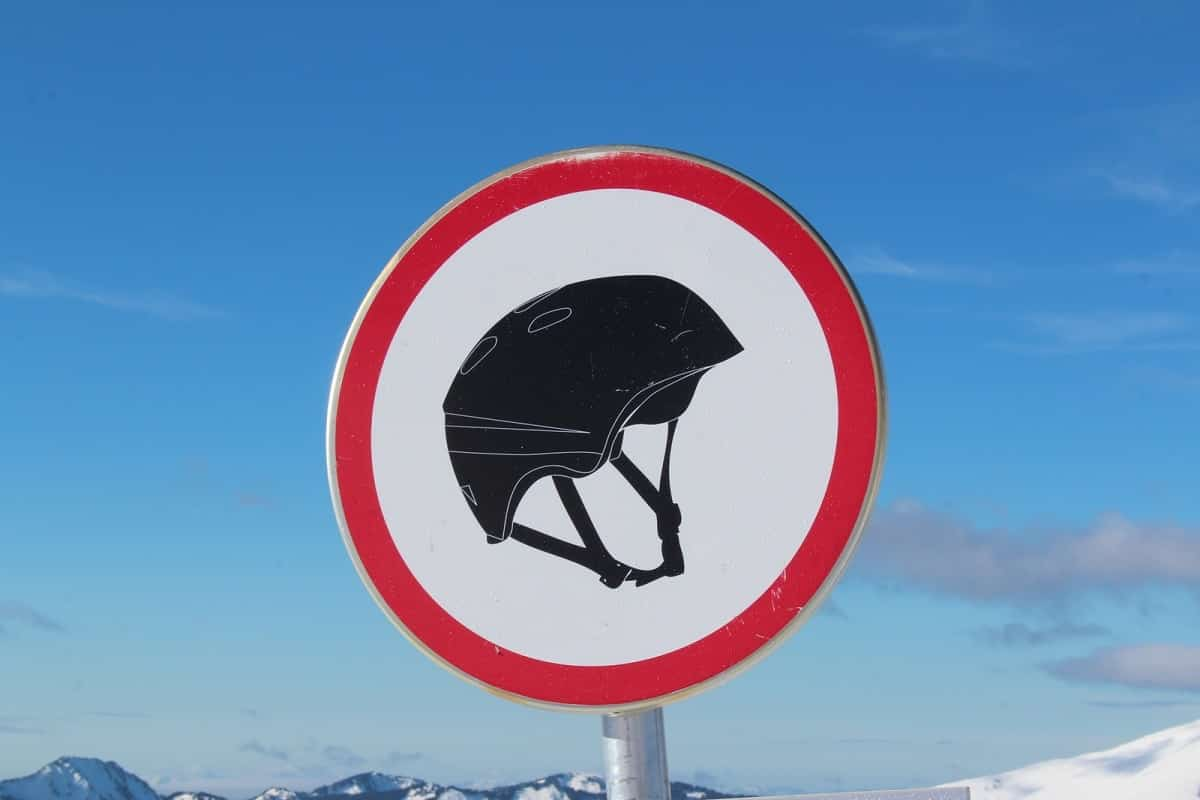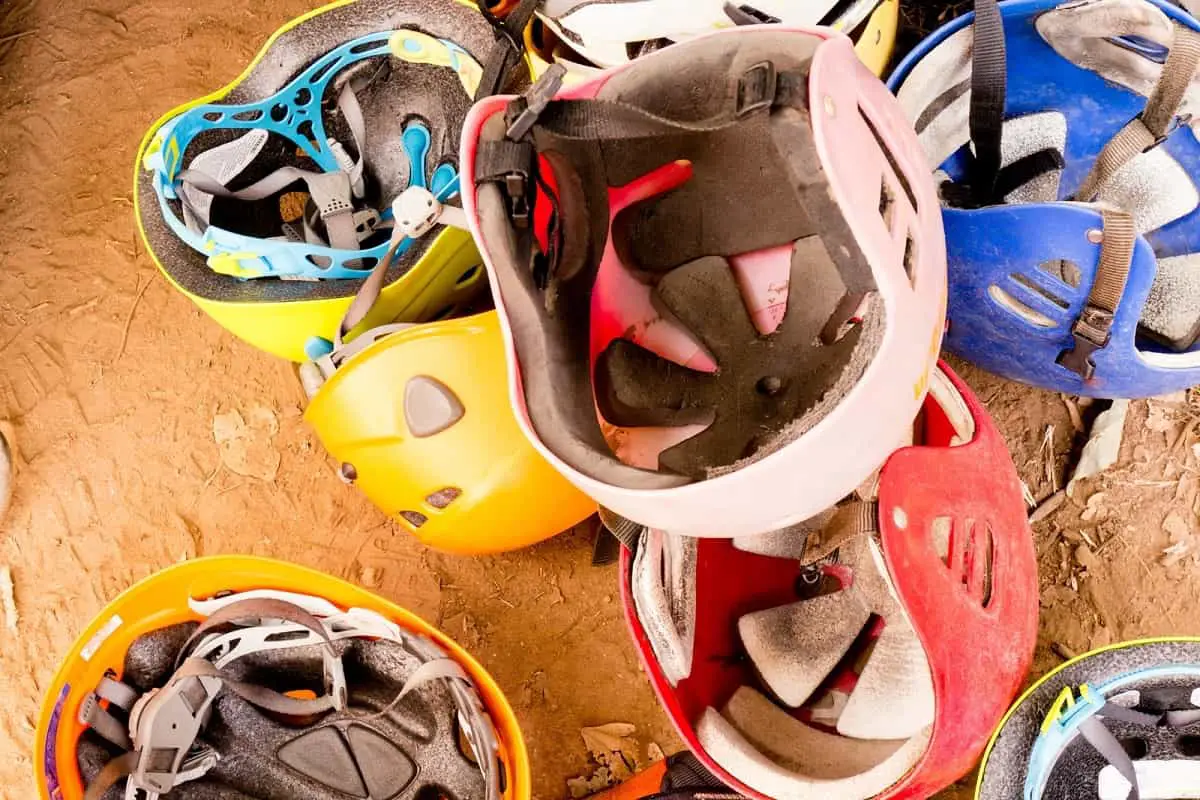How Long Do Ski Helmets Last?
Helmet manufacturers design ski helmets to be comfortable and long-lasting. Yet, if you were to look inside your helmet for an expiry date or use-by date tag, you won’t find one.
So, how long do ski helmets last? There are many variables that can affect a ski helmet’s lifespan. But, one thing is for certain – ski helmets don’t last forever.
Most helmet manufacturers recommend replacing a helmet after 3 to 5 years. However, they have no way of knowing how often you use your helmet. Nor how well you take care of it. Check the documentation that came with the helmet for their recommendation. If your helmet stays in good condition, it can last for many more years.
There are also other factors to consider that may shorten, or lengthen, the life of your helmet. Let’s take a look at them in more detail below.
Page Content

Disclosure: As an Avantlink and Amazon Associate, we earn from qualifying purchases. Disclosure Statement.
Anatomy Of A Ski Helmet
Contrary to what some people would like to believe, ski helmets do not last forever. The more you use your helmet, the more chance that its condition will deteriorate. Yet, as mentioned earlier, this is dependent on many things.
SUGGESTED: Best Ski Helmets With Visors
If you lock your new ski helmet in a closet for several years it will remain in pristine condition. But, if you were to use that same helmet daily for one ski season, it will suffer from some wear and tear from daily usage.

A quick overview of a snow helmet is as follows:
- The polymer outer shell, which is generally made from ABS or polycarbonate.
- The inner foam liner which will almost always be either EPS or EPP.
- Comfort padding.
- Chin strap.
The chin strap is a very important part of the helmet. It handles keeping the actual helmet secured to your head. The chin strap is sturdy and often made of vinyl or leather. It can handle quite a fair bit of serious abuse before it breaks or frays.
The comfort padding is the soft material on the inside that makes the helmet comfortable. It keeps your head and ears warm during a blizzard or sub-zero temperatures.
The comfort padding in a snow helmet is much the same as the comfort padding inside a motorcycle helmet. After extended periods of usage it can lose its soft, snug, comfy feel.
But don’t worry, when that happens it’s not the end of the world. The comfort padding in many helmets is replaceable with new padding, and it will feel like a new helmet. Super comfy again.
The outer shell is the part of the helmet that protects you from hard hits to the head. It is quite possible for you to ski for many years without inflicting any damage to the outer shell of your helmet.
But, you need to take care of the helmet shell, and you need to inspect it for chips, or cracks from time to time. Even if you haven’t had an accident, you or someone else may have dropped it on the road or a concrete floor. If for any reason you notice a hairline crack, then you should stop using that helmet immediately.
SUGGESTED: Snowboard Helmets With Bluetooth Audio
Using a helmet with a crack in the shell can leave you vulnerable if you were to have an accident. The shell could split open exposing your head to the nearest rock, tree branch, or ski lift pylon.
The final helmet component is the foam lining. The job of the foam liner is to absorb the energy from an impact, reducing the chances of injury to your head and brain. As mentioned, there are two main types of foam liner, EPS and EPP. We need to look further into these as they are crucial to the protective qualities of your ski helmet.

EPS and EPP Foam Linings
Most ski helmets will have either an EPS or EPP foam liner in them. It’s important that you know the type of lining your ski helmet has as it affects your helmet’s lifespan.
- EPS (Expanded Polystyrene) foam is the most common type of foam. It is inexpensive and lightweight. Helmets that use an EPS lining can deal with a single major impact before they need replacing. After a major impact, the EPS foam crushes. It cannot return to its original shape so cannot absorb energy from another impact.
- EPP (Expanded Polypropylene) foam is a thicker type of foam. Unlike EPS foam, EPP is like memory foam. Meaning that after an impact, the EPP is able to return to its original shape ready to protect your head again. However, if you should have a seriously hard impact which damages the outer shell, then you should be considering replacing your helmet as soon as possible (like right now!).
How Often To Replace Ski Helmets?
To be honest, that is not the right question to ask. The correct question would be ‘When’? When to replace a ski helmet?
Another common question is ‘do ski helmets expire’? You will find answers ranging from 5 years to between 3 to 5 years. But, most helmet manufacturers recommend replacing a helmet after 3 to 5 years.
The correct answer to ‘do ski helmets expire?’ is No. At least not in the sense of having a predefined expiry date like a packet of cornflakes does.
The reason is that manufacturers have no way of knowing how often you use your ski helmet. Some people will use their helmets for only one or two weeks per ski season. While others who work at a ski resort or live next to great ski slopes will likely use their helmet every day.
This content was originally published on headsdontbounce.com. If it appears on another website, it is a violation of the copyright owned by headsdontbounce.com.

Additionally, manufacturers have no idea of how well you take care of your helmet. Do you pat down your helmet at the end of the day, and pack it away in a clean, dry environment? Or, do you toss it in the corner with your ski boots, etc.?
On top of that is the potential for some people to accept that 5 years means 5 years no matter what. So let’s take a look at the better question of ‘when’.
When To Replace A Ski Helmet?
The Foam Lining
As discussed above, it’s important to know whether your helmet has an EPS or EPP foam liner. EPS foam looks like white polystyrene packaging material. Though EPS can and will come in a variety of colors not only white.
EPP looks more like regular plastic than polystyrene. If you’re not sure what type of foam your helmet has, you can check the manufacturer’s website to be certain.
SUGGESTED: Ski & Snowboard Helmets For Big Heads
An accident in a helmet with EPS foam can spell the end for the helmet. A visual check of the helmet is necessary to check for compression of the EPS foam. If there is no sign of compression or flattening, you can continue to use the helmet. If you have any doubt, it is always best to replace the helmet immediately.
After an accident, it is always a good idea to check the shell of the helmet for any signs of dents or cracks. Any damage to the outer shell is a good time to replace your helmet. Even a hairline crack can split right open in the next accident. Don’t risk it, get a new helmet straight away.
Ultra-Violet Damage
Even if you take meticulous care of your helmet, there is one thing that you can’t avoid and you need to be aware of. That is ‘photo-oxidative degradation’.
Photo-oxidative degradation is degradation due to exposure to ultra-violet light. Polycarbonate helmet shells can degrade due to prolonged exposure to UV rays. It’s worthy to note that you don’t need strong sunshine for UV damage.

Helmet manufacturers know about the problem of photo-oxidative degradation. To slow down the degradation, they add a stabilizer to the polycarbonate. The downside is that it doesn’t last forever, yet it will likely last longer than necessary. Photo-oxidative degradation will make the shell brittle and dangerous in an accident.
Once again, you need to inspect your helmet’s outer shell. After several years, the first thing that you might notice is that the helmet’s color is starting to fade. The fading will appear on the top of the helmet first. The next stage is the appearance of what looks like cracks on the helmet surface. Time to get a new helmet!
Technological Improvements
Helmet manufacturers are always working to improve the safety level of their helmets. R & D is an important part of helmet safety development to reduce the chance of concussion.
One technological improvement in recent years has been the development of MIPS technology. Similar technologies to MIPS, include WaveCel, POC’s SPIN, and Giro/Bell’s Spherical (aka MIPS SP).
RELATED: Ski Helmets With MIPS
These technologies are all designed to reduce rotational forces during an impact. By allowing a small amount of movement within the helmet, the impact forces dissipate. Thus lessening the chance of major head injuries.
As you can see, replacing your helmet for a helmet with new technology can make a lot of sense when it comes to safety.
To Summarize
Replace your ski helmet:
- after a single impact with EPS foam liner
- after several impacts with an EPP liner that is looking compressed
- if you see chips or cracks in the outer shell
- to keep up with technological improvements
Giving your ski helmet a quick check for any damage is a great way to start your ski or snowboarding session. After all, helmets can get damaged during transportation. Ski helmets can also get knocked around while in storage.

How Long Do Ski Helmets Last?
So lets recap on, how long do ski helmets last? Some manufacturers may suggest that you replace your helmet every 3-5 years. But that will be dependent on how often you use your helmet. And, how well you take care of your ski helmet.
One thing is for sure, though. If you get into an accident, you may need to replace your helmet immediately. But, this will depend on the extent of the damage, as well as the foam lining used in your helmet. Remember, if there is any visual damage to your helmet beyond a couple of scratches, then replace it. Your life is at risk if you don’t.
I hope we have covered the question of ‘how long do ski helmets last’ to your satisfaction. If you enjoyed this article, take a look at the related reads below for some more interesting reads!
Related Reads:


